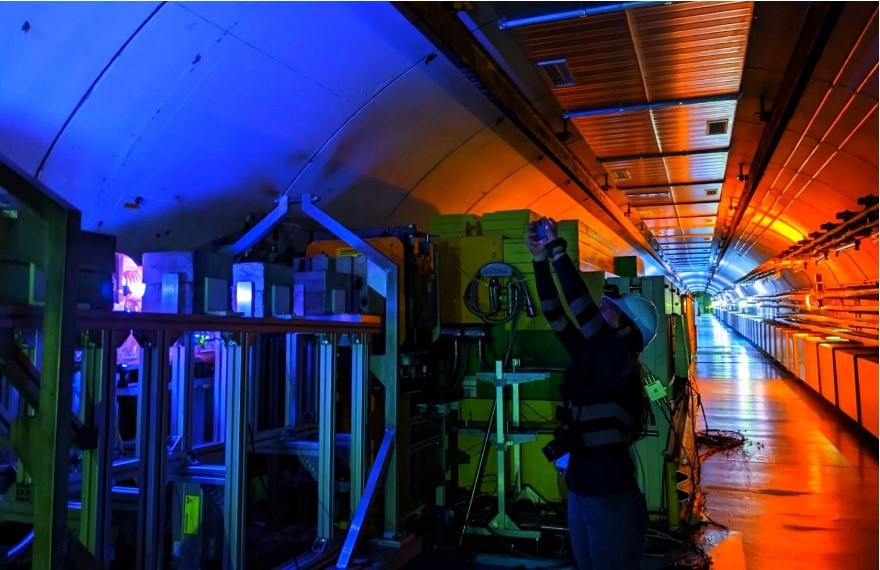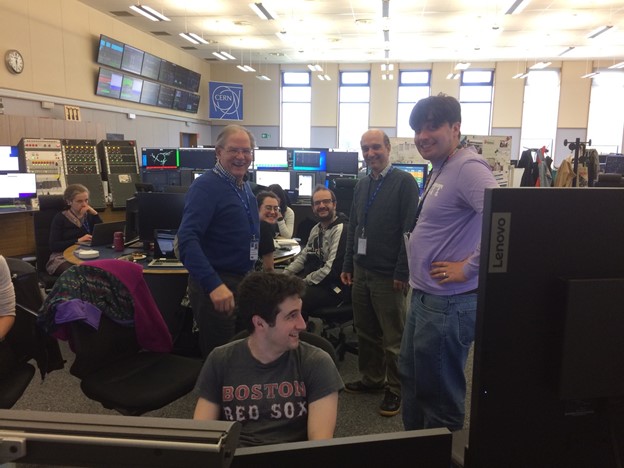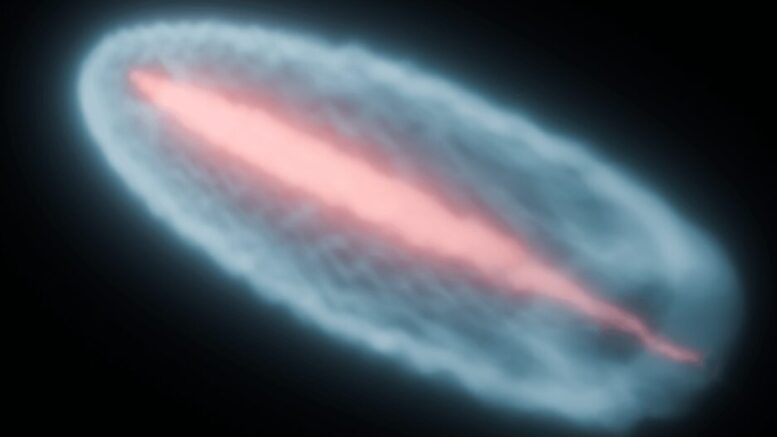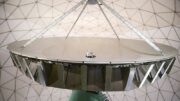An international team of scientists, led by the University of Oxford, has achieved a world-first by creating plasma “fireballs” using the Super Proton Synchrotron accelerator at CERN, Geneva, to study the stability of plasma jets emanating from blazars. The results, published today (3 November) in PNAS, could shed new light on a long-standing mystery about the Universe’s hidden magnetic fields and missing gamma rays.
Blazars are active galaxies powered by supermassive black holes that launch narrow, near-light-speed beams of particles and radiation towards Earth. These jets produce intense gamma-ray emission extending up to several teraelectronvolts (1 TeV = 1012/a trillion eV), which is detected by ground-based telescopes. As these TeV gamma rays propagate across intergalactic space, they scatter off the dim background light from stars, creating cascades of electron–positron pairs. The pairs should then scatter on the cosmic microwave background to generate lower-energy (GeV = 10⁹ eV) gamma rays – yet these have not been captured by gamma-ray space telescopes, such as the Fermi satellite. Up to now, the reason for this has been a mystery.
One explanation is that the pairs are deflected by weak intergalactic magnetic fields, steering the lower-energy gamma rays away from our line of sight. Another hypothesis, originating from plasma physics, is that the pair beams themselves become unstable as they traverse the sparse matter that lies between galaxies. In this case, small fluctuations in the beam drive currents that generate magnetic fields, reinforcing the instability and potentially dissipating the beam’s energy.
To test these theories, the research team – a collaboration between the University of Oxford and the Science and Technology Facilities Council’s (STFC) Central Laser Facility (CLF)- used CERN’s HiRadMat (High-Radiation to Materials) facility to generate electron–positron pairs with the Super Proton Synchrotron and send them through a metre-long ambient plasma. This created a scaled laboratory analogue of a blazar-driven pair cascade propagating through intergalactic plasma. By measuring the beam profile and associated magnetic-field signatures, the researchers directly examined whether beam-plasma instabilities could disrupt the jet.
The results were striking. Contrary to expectations, the pair beam remained narrow and nearly parallel, with minimal disruption or self-generated magnetic fields. When extrapolated to astrophysical scales, this implies that beam-plasma instabilities are too weak to explain the missing GeV gamma rays — supporting the hypothesis that the intergalactic medium contains a magnetic field that is likely to be a relic of the early Universe.
Lead researcher Professor Gianluca Gregori (Department of Physics, University of Oxford) said: “Our study demonstrates how laboratory experiments can help bridge the gap between theory and observation, enhancing our understanding of astrophysical objects from satellite and ground-based telescopes. It also highlights the importance of collaboration between experimental facilities around the world, especially in breaking new ground in accessing increasingly extreme physical regimes.”
The findings, however, bring up more questions. The early Universe is believed to have been extremely uniform and it is unclear how a magnetic field may have been seeded during this primordial phase. According to the researchers, the answer may involve new physics beyond the Standard Model. The hope is that upcoming facilities such as the Cherenkov Telescope Array Observatory (CTAO) will provide higher-resolution data to test these ideas further.
Co-investigator Professor Bob Bingham (STFC Central Laser Facility and the University of Strathclyde) said: “These experiments demonstrate how laboratory astrophysics can test theories of the high-energy Universe. By reproducing relativistic plasma conditions in the lab, we can measure processes that shape the evolution of cosmic jets and better understand the origin of magnetic fields in intergalactic space.”
Co-investigator Professor Subir Sarkar (Department of Physics, University of Oxford) said: “It was a lot of fun to be part of an innovative experiment like this that adds a novel dimension to the frontier research being done at CERN – hopefully our striking result will arouse interest in the plasma (astro)physics community to the possibilities for probing fundamental cosmic questions in a terrestrial high energy physics laboratory.”
This collaborative effort involved researchers from the University of Oxford, STFC’s Central Laser Facility (RAL), CERN, the University of Rochester’s Laboratory for Laser Energetics, AWE Aldermaston, Lawrence Livermore National Laboratory, the Max Planck Institute for Nuclear Physics, the University of Iceland, and Instituto Superior Técnico in Lisbon.


Source: University of Oxford








Be the first to comment on "Scientists recreate cosmic “fireballs” to probe mystery of missing gamma rays"